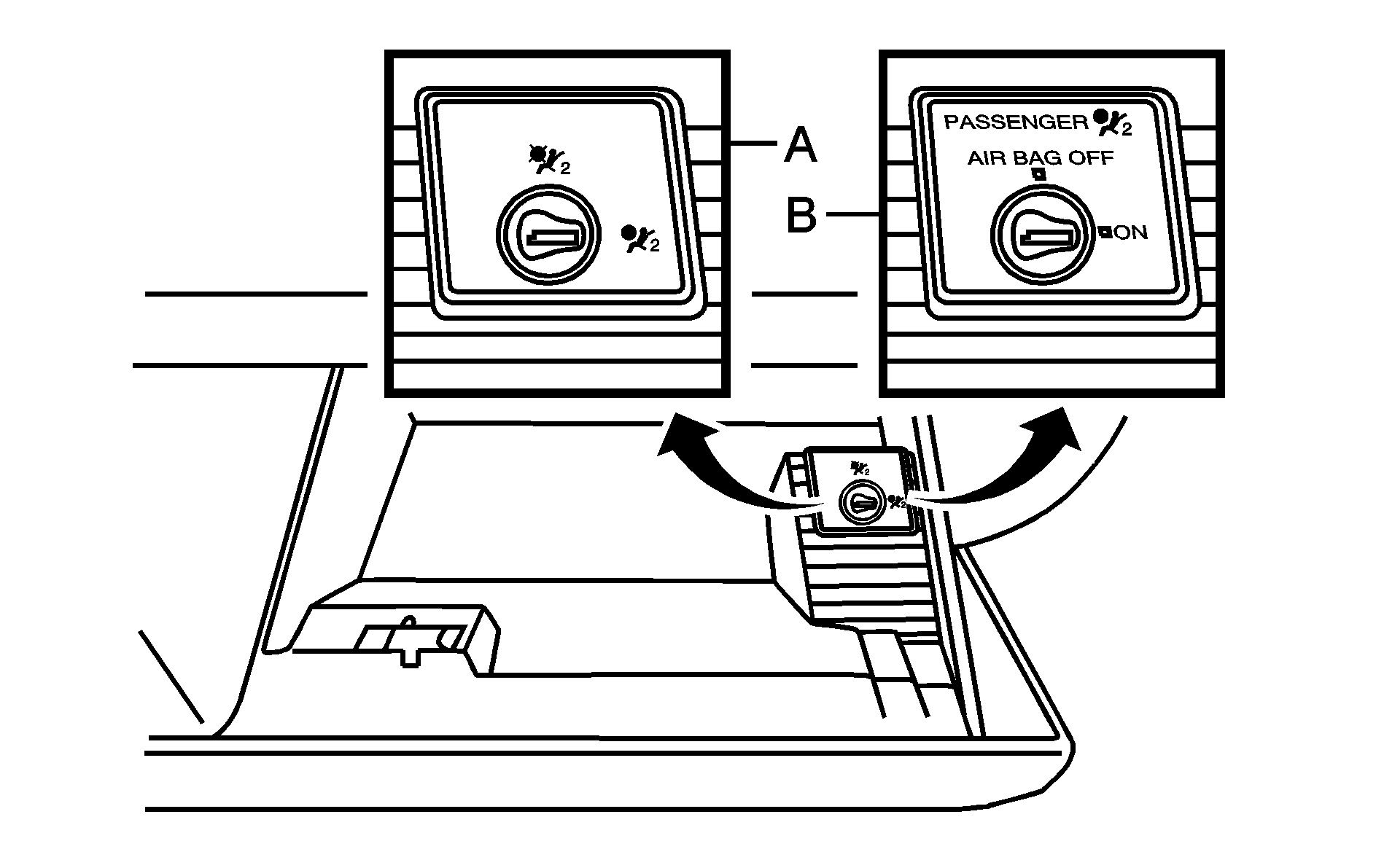Your vehicle has passenger airbags. There is an airbag off switch in the glove box you can use to turn off the passenger's airbags. See Airbag Off Switch for more on this, including important safety information. Your vehicle will either have the Canadian switch design (A) or the United States switch design (B).

Canadian Switch
United States Switch
Unless the passenger's airbags have been turned off, never put a rear-facing child restraint in this vehicle. Here is why:
Caution: A child in a rear-facing child restraint can be seriously injured or killed if the passenger's airbag inflates. This is because the back of the rear-facing child restraint would be very close to the inflating airbag. Do not use a rear-facing child restraint in this vehicle unless the passenger's airbag has been turned off.
Even though the airbag off switch is designed to turn off the passenger's airbags under certain conditions, no system is fail-safe, and no one can guarantee that an airbag will not deploy under some unusual circumstance, even though it is turned off. We, therefore, recommend that rear-facing child restraints be transported in vehicles with a rear seat that will accommodate a rear-facing child restraint, whenever possible. If you need to secure a forward-facing child restraint in the passenger seat, always move the passenger seat as far back as it will go.Caution: If the airbag readiness light ever comes on when you have turned off the airbags, it means that something may be wrong with the airbag system. The passenger's airbags could inflate even though the switch is off. If this ever happens, do not let anyone whom the national government has identified as a member of a passenger airbag risk group sit in the passenger's position (for example, do not secure a rear-facing child restraint in your vehicle) until you have your vehicle serviced. See Airbag Off Switch .
- Find the anchors in the passenger seat. See Lower Anchors and Tethers for Children (LATCH) .
- Put the child restraint on the seat.
- Attach the anchor points on the child restraint to the anchors in the vehicle. The child restraint instructions will show you how. See Top Strap if your child restraint has one.
- Push and pull the child restraint in different directions to be sure it is secure.
To remove the child restraint, disconnect the anchor points.
